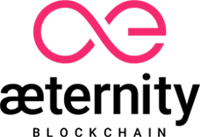In 2018, we are witnessing the creation of hundreds of new blockchain projects. As with any growing industry, the majority of new projects that crop up around it are barely noticeable, while the community focuses on a promising few.
Since January 2009, when Satoshi Nakamoto launched Bitcoin, no year has passed without the community witnessing new and interesting blockchain projects. It is becoming difficult to keep track of all the new ones being designed, developed, and brought to market.
The following five blockchain projects are worth watching in 2018.
1. EOS
 EOS blockchain is designed to do everything that the Ethereum blockchain does. But it tries to tackle challenges that Ethereum faces, such as high fees, a complex user interface and poor scalability.
EOS blockchain is designed to do everything that the Ethereum blockchain does. But it tries to tackle challenges that Ethereum faces, such as high fees, a complex user interface and poor scalability.
To make its use more convenient, EOS removes the need for gas when running an application. Instead, according to the amount of computing power they need, developers put an amount of the native coin in a stake account. Thus they become co-owners of the platform.
Daniel Larimer, the founder and chief technology officer of Block.one, is also the founder of the decentralised asset exchange platform BitShares and the decentralised blogging platform Steemit.
In an interview on the Epicenter podcast, Larimer disclosed that he plans to stay with EOS and has no plans to leave for another project, as he has done with both BitShares and Steemit. The reason, he says, is because the EOS design will allow him to build any other projects he may have in mind.
2. Aeternity
 Ethereum introduced smart contract applications to the world. But its design has a lot of weaknesses that startups aim up to fix. In addition to EOS’s attempt to solve some of these weaknesses, we then have Aeternity.
Ethereum introduced smart contract applications to the world. But its design has a lot of weaknesses that startups aim up to fix. In addition to EOS’s attempt to solve some of these weaknesses, we then have Aeternity.
Two main issues that the Aeternity blockchain focusses on are scalability and the enrichment of smart contracts with necessary real-world data.
The team behind Aeternity designed it with built-in state channel functionality, the same feature Bitcoin is adopting through the Lightning Network. The state channel capacity ensures that the blockchain can handle an infinite number of transactions by allowing users to create peer-to-peer channels that confirm only the first and last transactions.
The most revolutionary feature of Aeternity, however, is its ability to support the feeding of smart contracts with real-world data in real time. This is done through the use of oracles that are part of the peer-to-peer network on which the blockchain runs.
On the platform, smart contracts can be executed based on factors like prevailing weather conditions or stock market prices.
Aeternity was launched in late 2017 and it is registered as a business in Liechtenstein. The project raised about US$30 million in funding through an ICO that ran between April and June 2017 to support its development.
3. IOTA
 IOTA offers a significantly different implementation of blockchain or distributed ledger. It uses Tangle technology, which powers micro transactions with no requirement for users to pay fees. In place of fees, users help confirm one another’s transactions.
IOTA offers a significantly different implementation of blockchain or distributed ledger. It uses Tangle technology, which powers micro transactions with no requirement for users to pay fees. In place of fees, users help confirm one another’s transactions.
Due to support of free micropayment transactions, IOTA’s founders and developers have positioned the project as best suited for the internet of things (IOT).
In December 2015, IOTA raised close to US$600,000 from its token sale. The project has grown in value over time and today sits in the top ten in terms of market capitalisation, at over US$5 billion. The team has formed alliances with various entities in its goal toward building a new structure for the global economy. By removing the need for fees, it allows both natural and artificial counterparties to send and receive transactions.
4. Golem
 Decentralised platform Golem allows people in the network to sublet computer power for free to others who need it to perform various kinds of computational tasks.
Decentralised platform Golem allows people in the network to sublet computer power for free to others who need it to perform various kinds of computational tasks.
Golem has implemented a concept similar to decentralised storage platforms Filecoin, Sia and Storj. Instead of storage, the Israeli-based startup facilitates the renting and letting of computer power in a peer-to-peer fashion.
In April, Golem launched on the Ethereum mainnet, a year and a half after it raised over 820,000 ETH (about US$500 million at 2018 exchange rates) from the sale of the platform’s native token.
5. DTube
 A competitor with YouTube in the video content market, DTube is an application built on top of the Steemit peer-to-peer network. On Steemit’s blogging website, content creators are paid according to the number of reactions they get from content consumers in terms of likes and comments. DTube users who upload videos will be paid using a similar model: according to the number of views, likes and comments they accumulate.
A competitor with YouTube in the video content market, DTube is an application built on top of the Steemit peer-to-peer network. On Steemit’s blogging website, content creators are paid according to the number of reactions they get from content consumers in terms of likes and comments. DTube users who upload videos will be paid using a similar model: according to the number of views, likes and comments they accumulate.
Payments are made in Steem, the native coin of the Steemit network. The emission designed into the platform’s protocol is the source of the coins. Users can convert earnings into other cryptocurrencies, as well as into fiat money.
